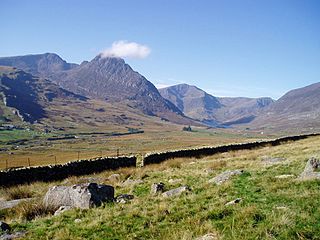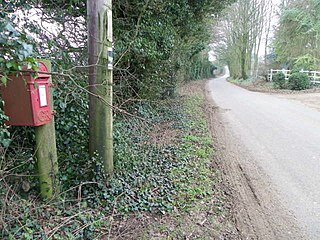This article includes a list of references, related reading or external links, but its sources remain unclear because it lacks inline citations .(April 2015) (Learn how and when to remove this template message) |
The Llyn Fawr Phase is the name given by archaeologists to the final metalworking phase of the Bronze Age in Britain, dating to between c. 800 BC and c. 700BC, when the transition to the Iron Age was underway.

The Bronze Age is a historical period characterized by the use of bronze, and in some areas proto-writing, and other early features of urban civilization. The Bronze Age is the second principal period of the three-age Stone-Bronze-Iron system, as proposed in modern times by Christian Jürgensen Thomsen, for classifying and studying ancient societies.
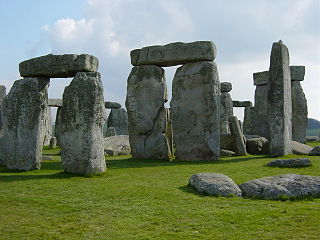
Several species of humans have intermittently occupied Britain for almost a million years. The Roman conquest of Britain in 43 AD is conventionally regarded as the end of Prehistoric Britain and the start of recorded history in the island, although some historical information is available from before then.
The Iron Age is the final epoch of the three-age division of the prehistory and protohistory of humankind. It was preceded by the Stone Age and the Bronze Age. The concept has been mostly applied to Europe and the Ancient Near East, and, by analogy, also to other parts of the Old World.
It is named after a hoard of metalwork found in Llyn Fawr in Glamorgan between 1911 and 1913. Bronze and iron co-existed although the latter was more limited to cutting implements whilst bronze was used for both weapons (Sompting axes) and other items such as cauldrons, razors, horse harness mounts and winged chapes.
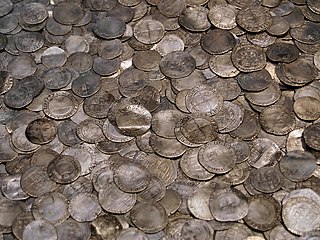
A hoard or "wealth deposit" is an archaeological term for a collection of valuable objects or artifacts, sometimes purposely buried in the ground, in which case it is sometimes also known as a cache. This would usually be with the intention of later recovery by the hoarder; hoarders sometimes died or were unable to return for other reasons before retrieving the hoard, and these surviving hoards might then be uncovered much later by metal detector hobbyists, members of the public, and archaeologists.
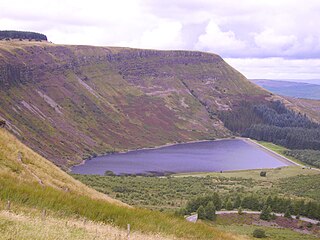
Llyn Fawr is a lake in the Cynon Valley, South Wales, that is best known as the site of an important hoard of weapons and tools from the late Bronze Age and early Iron Age. It lies within Craig-y-Llyn an area that is designated as a Site of Special Scientific Interest.

Glamorgan, or sometimes Glamorganshire,, is one of the thirteen historic counties of Wales and a former administrative county of Wales. It was originally an early medieval petty kingdom of varying boundaries known as Glywysing until taken over by the Normans as a lordship. Glamorgan is latterly represented by the three preserved counties of Mid Glamorgan, South Glamorgan and West Glamorgan. The name also survives in that of Vale of Glamorgan, a county borough.
Imports of Gündlingen swords from the Continental Hallstatt C phase influenced local styles such as the Thames sword.

Hallstatt is a small town in the district of Gmunden, in the Austrian state of Upper Austria. Situated between the southwestern shore of Hallstätter See and the steep slopes of the Dachstein massif, the town lies in Salzkammergut region, on the national road linking Salzburg and Graz.
It is preceded by the Ewart Park Phase.



